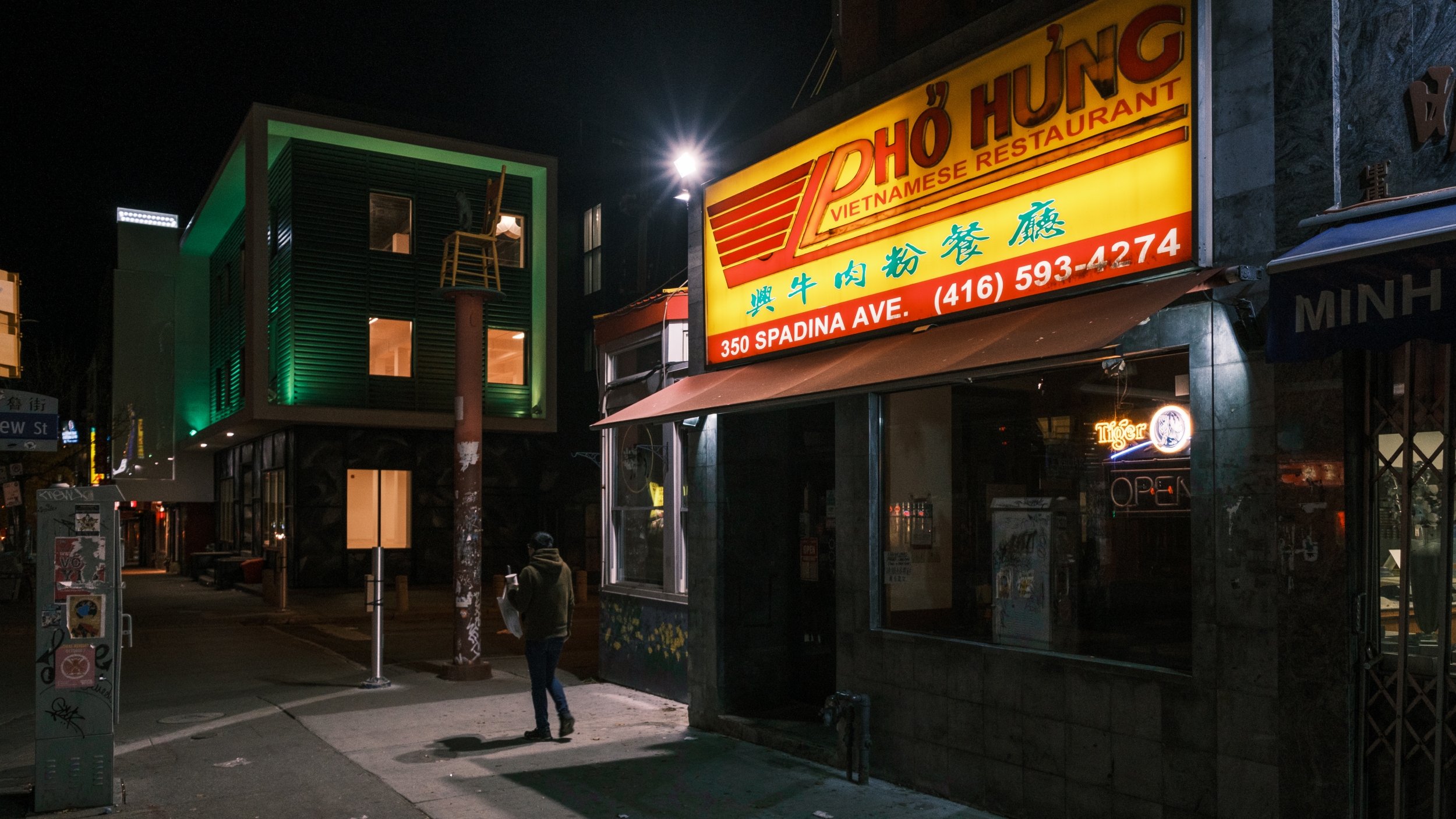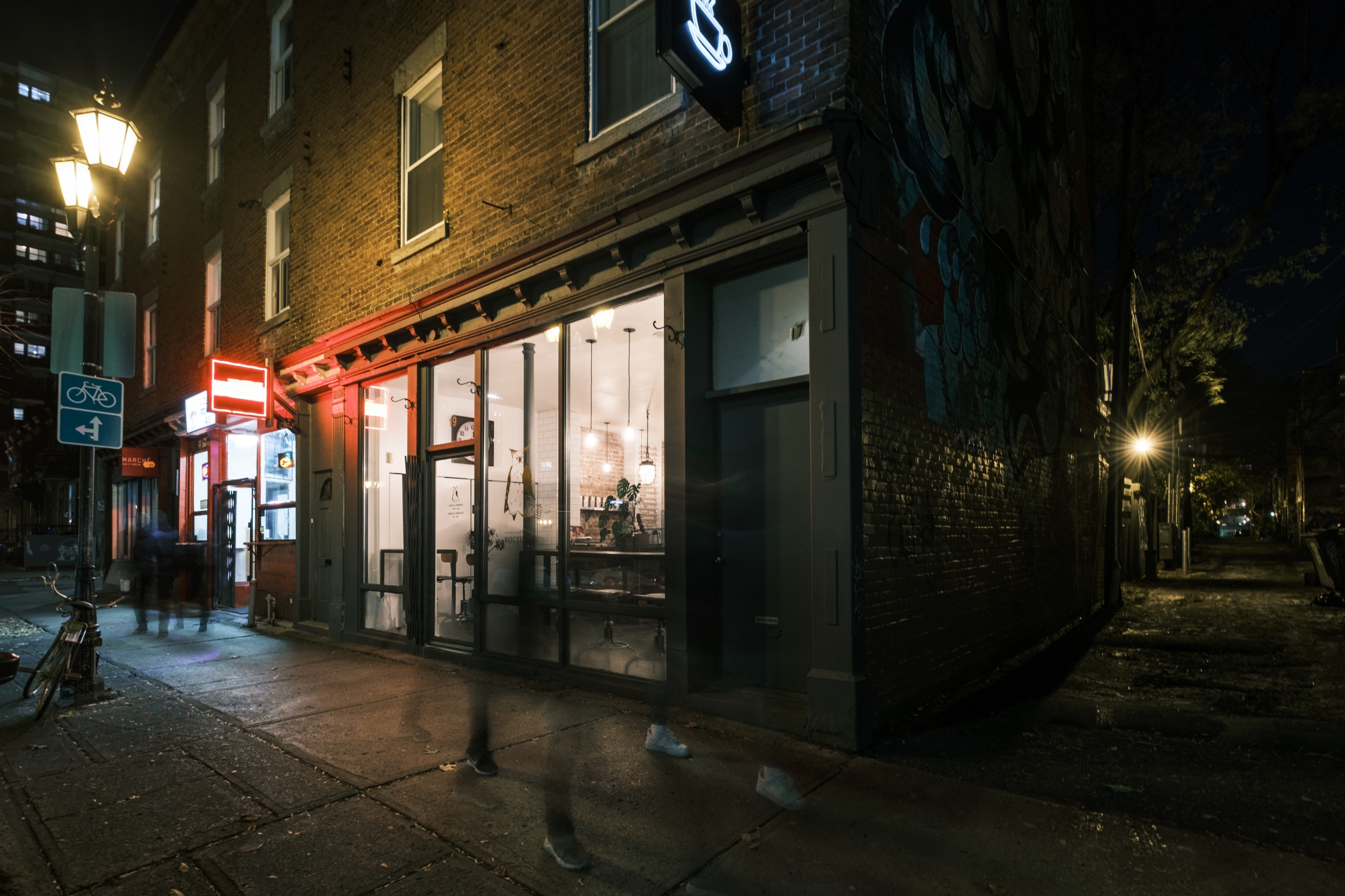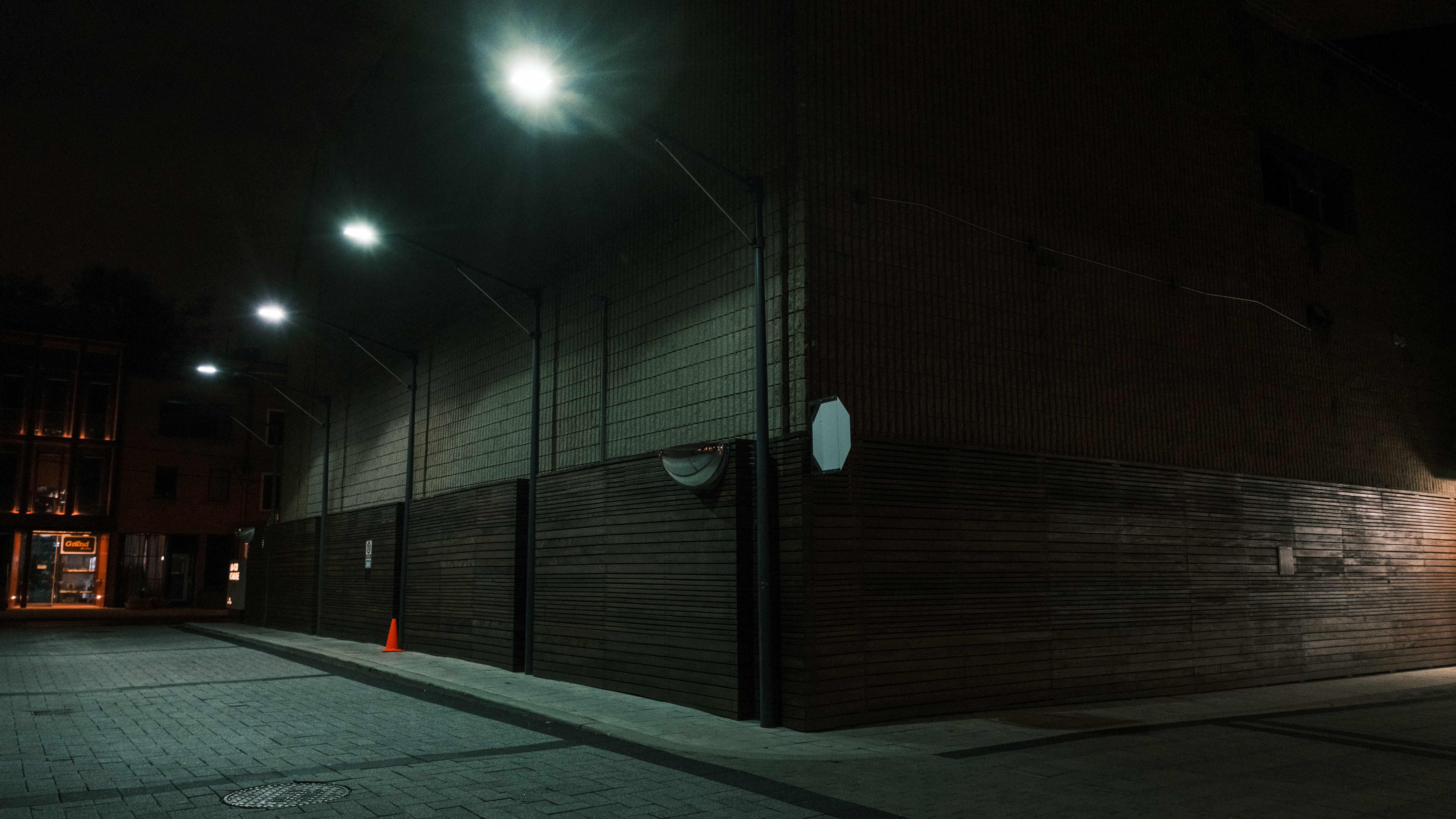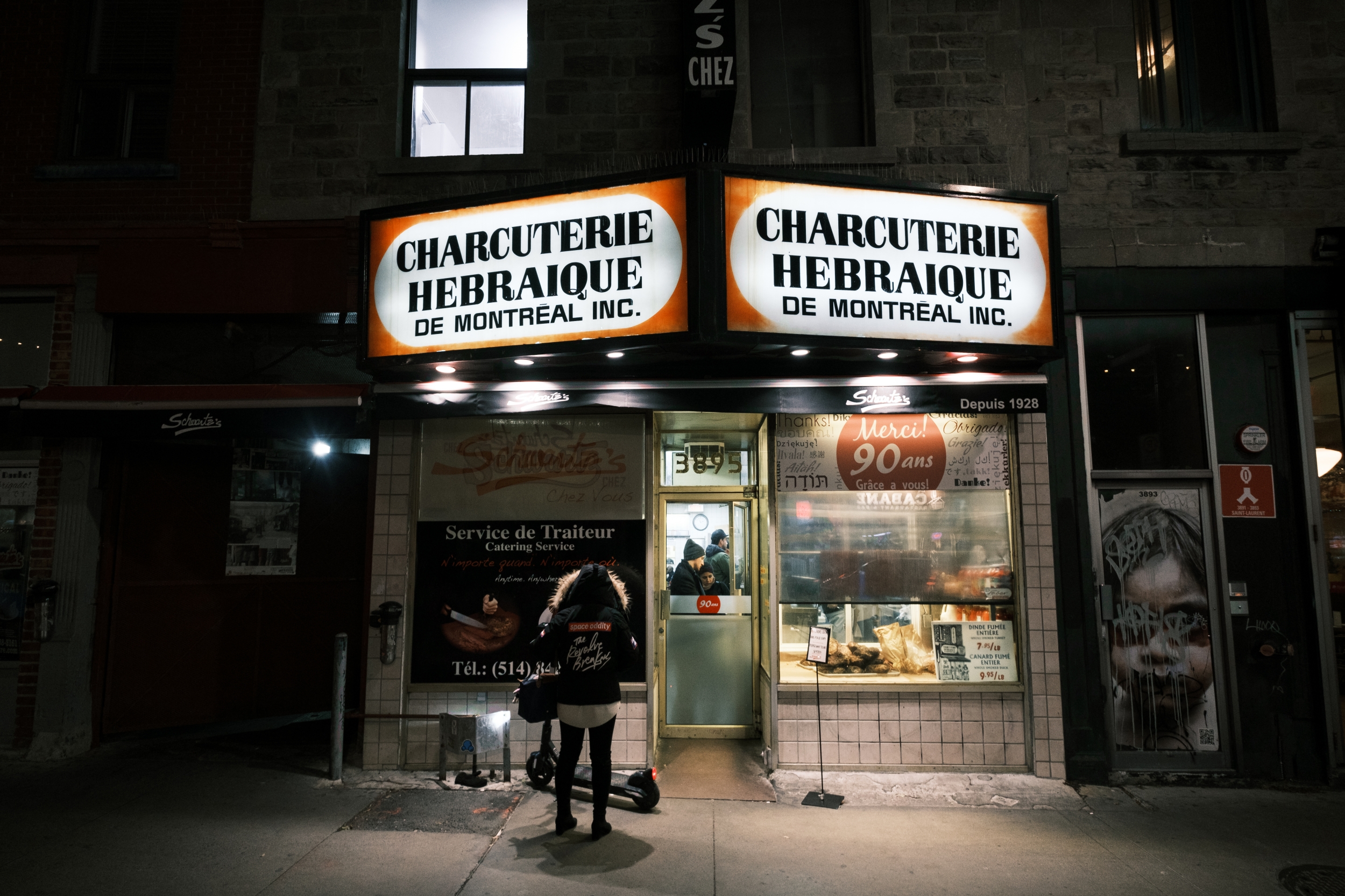There’s a certain feeling I get when I walk around at night with a camera slung around my neck. I don’t get the same feeling during the day. When the sun is out and people are everywhere, there’s too much visual noise and I find it difficult to filter out the distractions. At night, although there’s less light, it’s easier to isolate and frame my images with less clutter. I can see from a block away if there’s a good scene up ahead when it’s dark.
Even during the day when I walk past a spot, I can imagine what it’s going to look like at night and I can decide to return later to investigate. This is why I enjoy shooting with film cameras after dark. The camera doesn’t illuminate back at me. There’s no EVF or LCD to blind me once my eyes acclimatize to the dark. Although the Fujifilm X-Pro3 is not a film camera, it acts like one in many ways. First of all, there’s no bright LCD facing back at me while shooting. Second, I can shoot via the OVF instead of the EVF, to avoid the brightness of the screen, no lag in lowlight, no screen blank out at the moment of exposure, as well as view the scene outside the frame lines. Finally, the Classic Neg film simulation has a very analogue vibe that pairs well with the X-Pro3’s rangefinder aesthetic.
Since receiving the new Fujifilm X-Pro3, I’ve enjoyed shooting with it at night more than shooting with it during the day. I don’t think it’s better at night than any other Fujifilm camera, since the X-H1 is more ideal since IBIS allows for better hand held images at slow shutter speeds. However, the camera is more compact, stealth and the articulating screen does allow for better low angle (waist level) and high angle (above the head and upside down) photography. I had an opportunity to travel to Toronto and Montreal recently for Fujifilm Canada’s launch event for the X-Pro3, and I was able to photograph both cities during the day as well as night. With the X-Pro3, I feel the XF23mm f/1.4 and the XF35mm f/1.4 would be better lenses to shoot at night, even though the Fujicron versions would have better overall AF performance. Having that extra stop of speed would be the difference between shooting ISO 1600 and 3200. I also enjoyed shooting with the XF 10-24mm f/4 R OIS at night for the stabilization, although the lens isn’t great with the OVF (the widest frame lines is now 23mm).
I’m not a big fan shooting with a tripod, mostly because it’s difficult to use when shooting on the streets, especially at night. I’d rather carry around a monopod and permanently keep the camera mounted on top, but I would recommend a ball head to quickly go from portrait to landscape. In general, if I’m shooting at slow shutter speeds, I make sure I brace myself against a wall or a pole, or I tuck in my elbows against my chest and use the viewfinder to create a body tripod (my brow and both elbows act as tripod legs) and ease into the shutter while exhaling. To avoid any shutter shake, you can shoot in electronic shutter mode, although beware of rolling shutter if you have any motion in your image (moving car or person). A note about using the X-Pro3 on a tripod: depending on the type of tripod you have, the unusual flip-down LCD screen might not open up fully. If the plate is visible when mounted on the camera, the LCD screen might not swing down at 90 degrees. You might need to attach a small ball head instead of your larger mount if you want full use of the articulating LCD screen, or else you’re stuck using the EVF/OVF instead.
My final thoughts on shooting with the X-Pro3 at night? It was a lot of fun. I felt like a man on a mission. I was looking for epic night street photography images, and I think I was able to pull it off. I could have captured similar images using the X-T3 (which I had with me) or the X-H1 (which has IBIS), but each camera body puts me in a different mindset. The smaller and lighter rangefinder body with a hidden LCD screen gave me a film-like shooting experience that the other two cameras can’t provide. Having the Classic Neg profile also helped me feel like I was shooting with a film camera since the output of these files have a very analogue feel to them. As I type out this article I have the X-Pro3 and XF23mm f/2 R WR starring back at me on my studio desk. It’s only 8pm and I already feel like heading off into the night and photograph near the docks. A great camera doesn’t just help you capture great images, it helps you want to take great images! Thanks for reading and happy shooting.

























